Finding the Hidden Headwaters of New York’s Famous Flushing Creek
Turn right at a burnt-out bridge to find the source of the creek that fed the World’s Fair fountains.
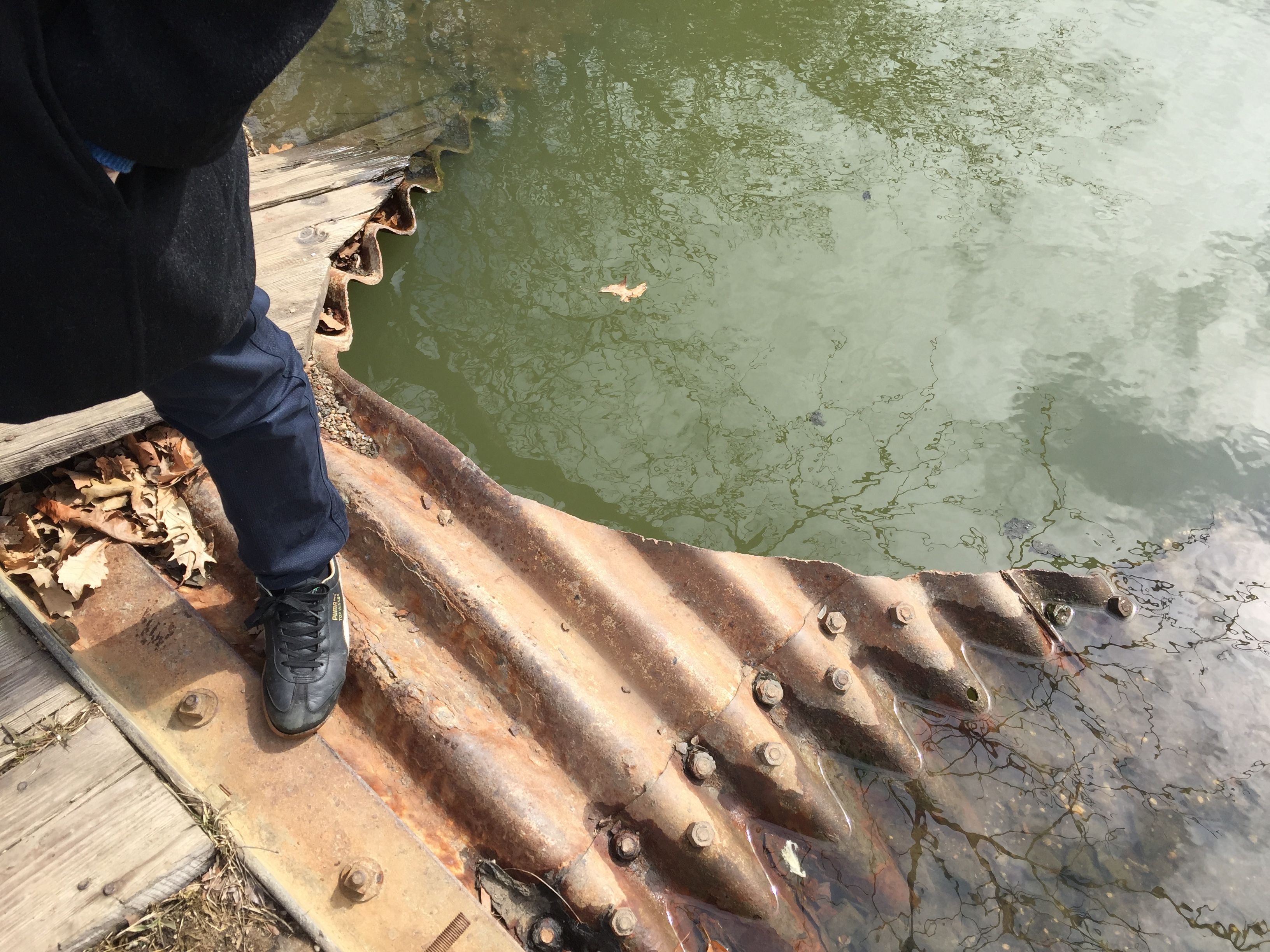
Flushing Creek is often channeled underground (Photo: Sarah Laskow)
Flushing Creek, which once ran through the wetlands of Queens, New York, has been hidden in plain sight for at least a century. Unlike some of New York’s industrial waterways, the Flushing Creek can’t be navigated by boat. It’s not even possible to walk its route.
But if you’ve read The Great Gatsby, you’ve encountered Flushing Creek. It appeared in the valley of ashes, under the eyes of Dr. Eckleburg, as the “small foul river” that would arrest traffic on the way to Manhattan. If you’ve seen photos of the 1939 World’s Fair, with its Lagoon of Nations and dancing fountains, you’ve seen Flushing Creek, corralled by architects and designers for their own purposes.
To find Flushing Creek these days, to trace it from its source to the place where it opens into Flushing Bay, it’s helpful to have a guide who knows where to look.
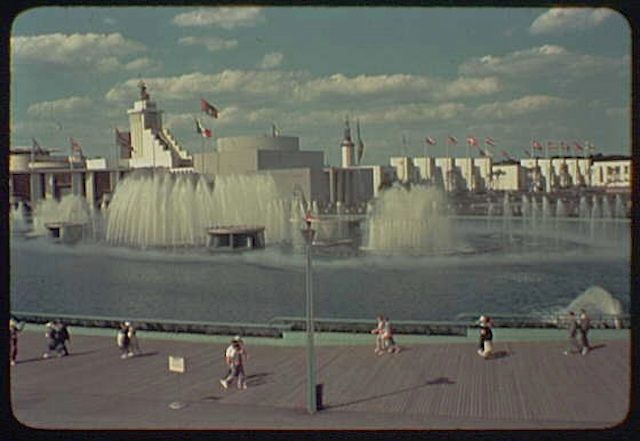
The 1939’s World Fair (Photo: Library of Congress/LC-G605-CT-00424-1/2)
Sergey Kadinsky has spent the past three years investigating New York City’s forgotten lakes, ponds, and streams: his new book, The Hidden Waters of New York City, is a guide to the city’s watery secrets. Learn to look at the city in the right way, and clues to its past life as a tidal marsh are everywhere. Maps and street names reveal spots that were once too soggy to develop, and giant, pooling puddles are signs of streams forced underground.
Kadinsky is the sort of person who wants to know where water comes from; as a kid in Riga, Latvia, he would explore the creek that ran by his house, trying to trace it to its beginning. Flushing Creek first caught his interest when he worked on the 17th floor of a Queens office building that overlooked Willow Lake, which was created as a reservoir for the World’s Fair and filled with the water of the creek. Today, it’s surrounded by highways and for many years was closed off to the public. Looking down on the lake, which is one of the city’s only protected wetlands, Kadinsky wanted to get closer and see if he could find its source.
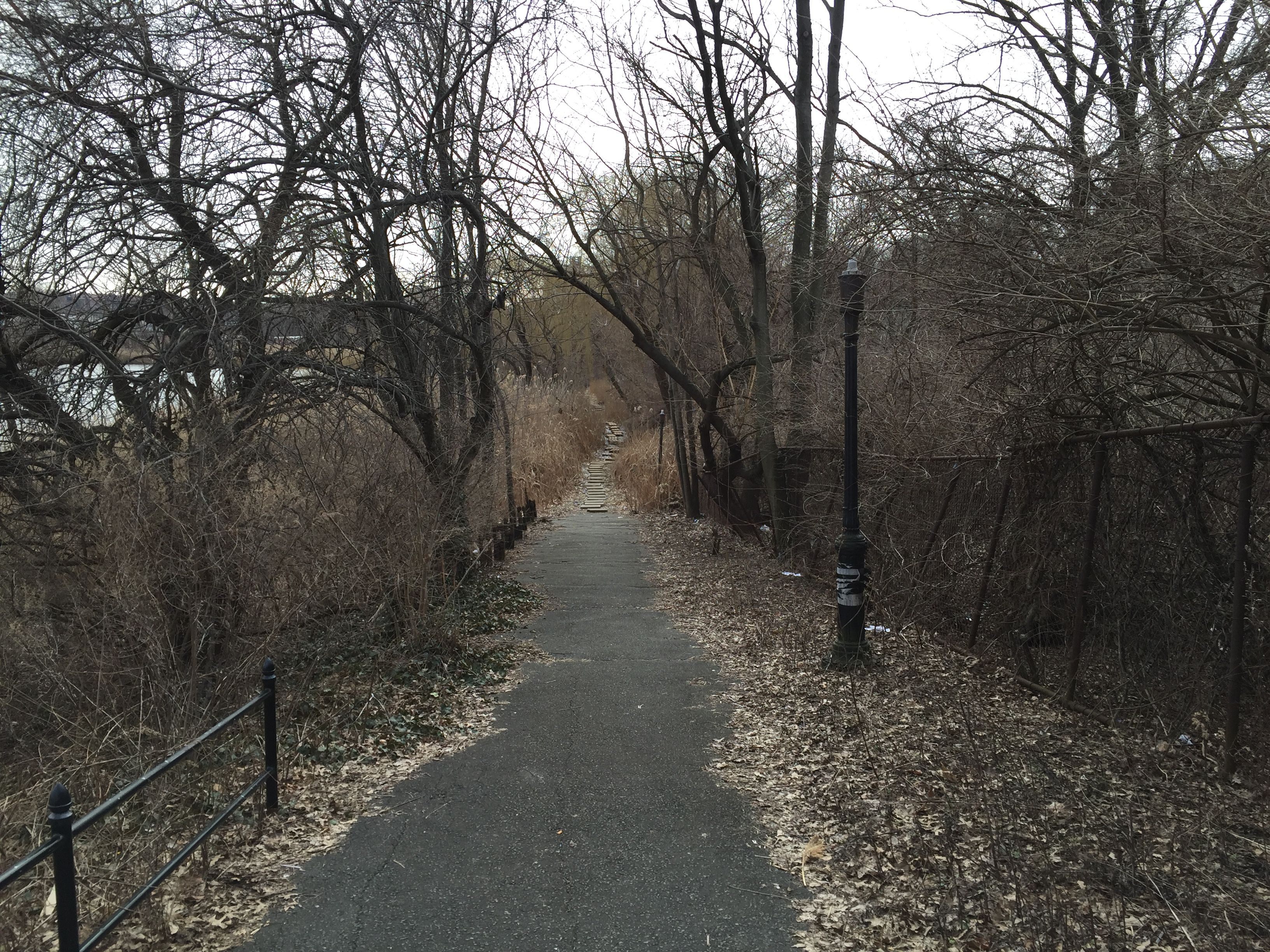
The path through Willow Lake Preserve (Photo: Sarah Laskow)
On a sunny Sunday morning in March, he leads the way through the wrought iron gate of the Willow Lake preserve and across a bridge spanning a highway. On the other side, the sky opens up, and there, through a wall of giant grass, the lake sits quietly. There’s a lonely grandeur to this place, the feeling of an old mansion with dust covers over the furniture.
Just a few years ago, this park was entirely neglected. The soggy paths were overgrown and, in some places, navigable only by walking on disintegrating wooden pallets. In 2013, after some prodding, the city re-opened the preserve to the public.
New York City parks don’t often feel so wild as this one, where the grass edges up to create tight corridors, and pieces of dried vine catch at your feet. It’s hard to shake the sense of isolation, too, even though there’s plenty of evidence of humans here. The ground squelches with water that has the rainbow sheen of pollution to it, and in the background, the rush of cars hums without stop.
The trail edges along the lake, past the graffitied bases of long-abandoned street lamps, to another bridge, only partially restored after it was burnt in the late 1990s. Kadinsky turns away from the path, to another, unobtrusive track worn through the grass. “Here’s the part where people don’t go,” he says.
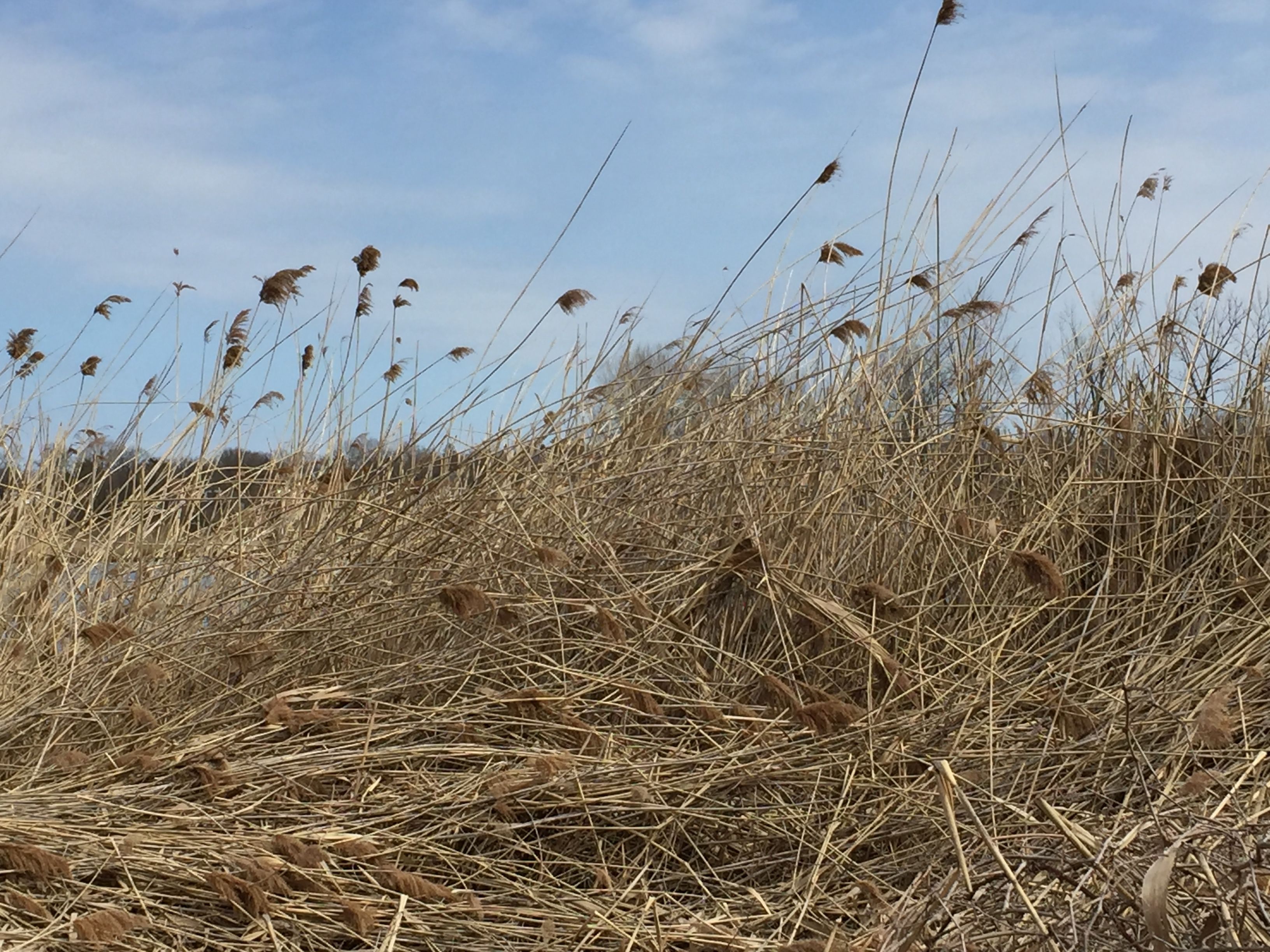
The lake is hidden behind the grass (Photo: Sarah Laskow)
Along this track, Flushing Creek appears. It’s a small little brook, that burbles a bit and still flows when it’s freezing out. Follow the creek just a little ways, and you’ll come to a small stoneworks, with water spilling out.
Here are the headwaters, such as they now are, of Flushing Creek. The original source has been buried beneath the Jamaica railyard, just over the ridge, and somehow, that water has been channeled, underneath the earth, until it emerges here. From this opening, the water flows about three miles, through reservoirs made by men, through underground channels, and towards the bay.
Downstream, the creek reappears as Meadow Lake, where any tall grass has been chopped back and the land filled with picnic tables; this is where the World Fair’s strange monuments and exhibits once stood, and where the Hong Kong Dragon Boat Festival takes place each August.
It flows under soccer fields in Flushing Meadows-Corona park and emerges in a large, manmade pond with a mysterious stone cylinder in the center. (This, Kadinsky says, once controlled the Fair’s fountain displays.) It appears again at the Tide Gate Bridge, a Art Deco structure that blocks the salt water of the bay from flowing up onto the land and into the park. Here, too, are the train tracks that F. Scott Fitzgerald wrote into his story.
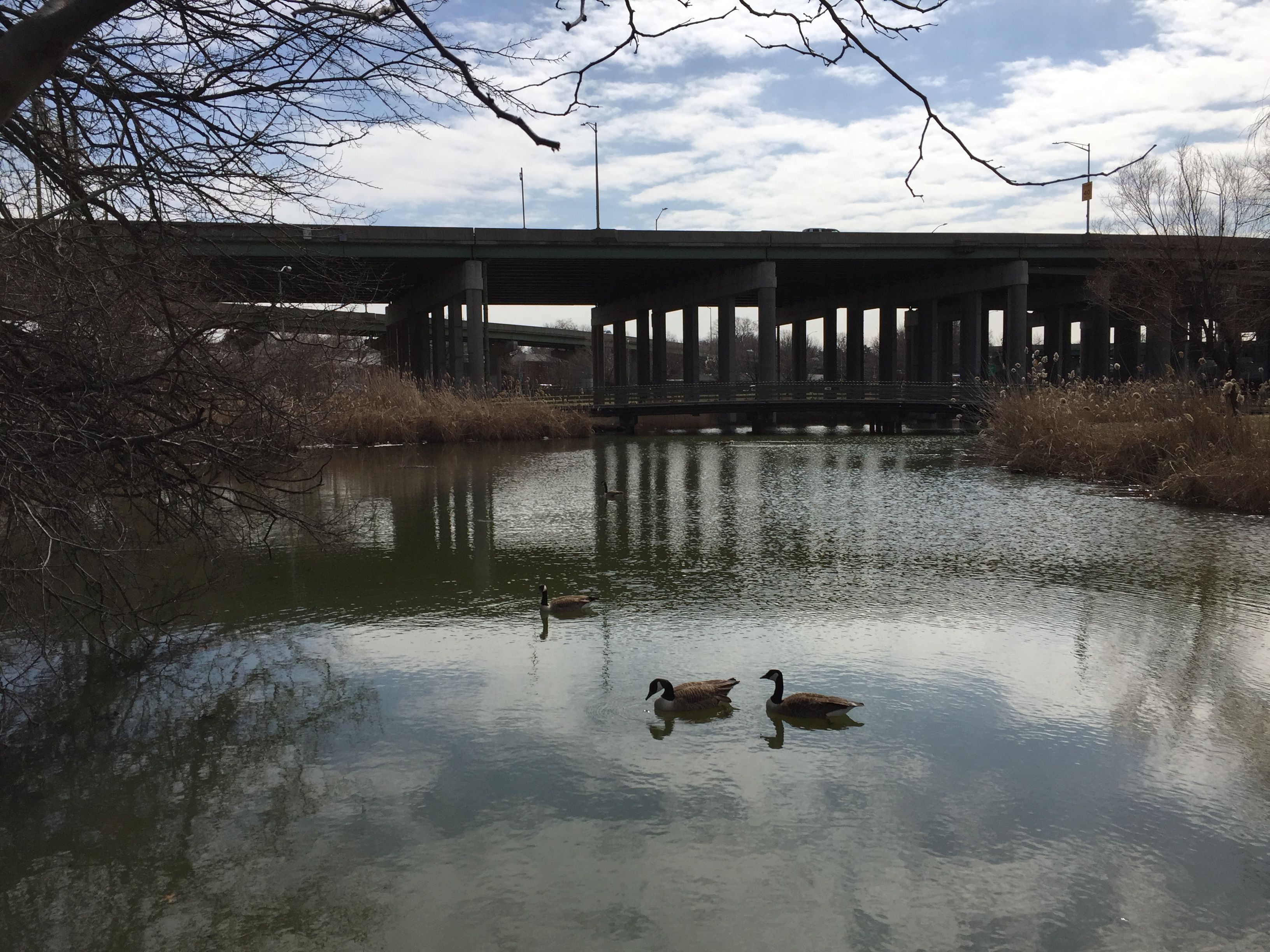
Meadow Lake is the second man-made reservoir in Flushing Creek’s current course (Photo: Sarah Laskow)
On the salty side of the bridge, on a small point of land, the new Mets stadium, CitiField, shares ground with the auto repair shops of Willets Points. This spot is so close to La Guardia airport that it feels like you could almost touch the planes that pass overhead. On one side of the road, the stadium advertises Budweiser and Goya products in bright lights; on the other, hand-painted signs promise muffler repairs. The streets are neglected, with potholes the size of a kiddie pools.
Kadinsky navigates this stretch of treacherous road, onto a bend in one of the many highways that intersect here.
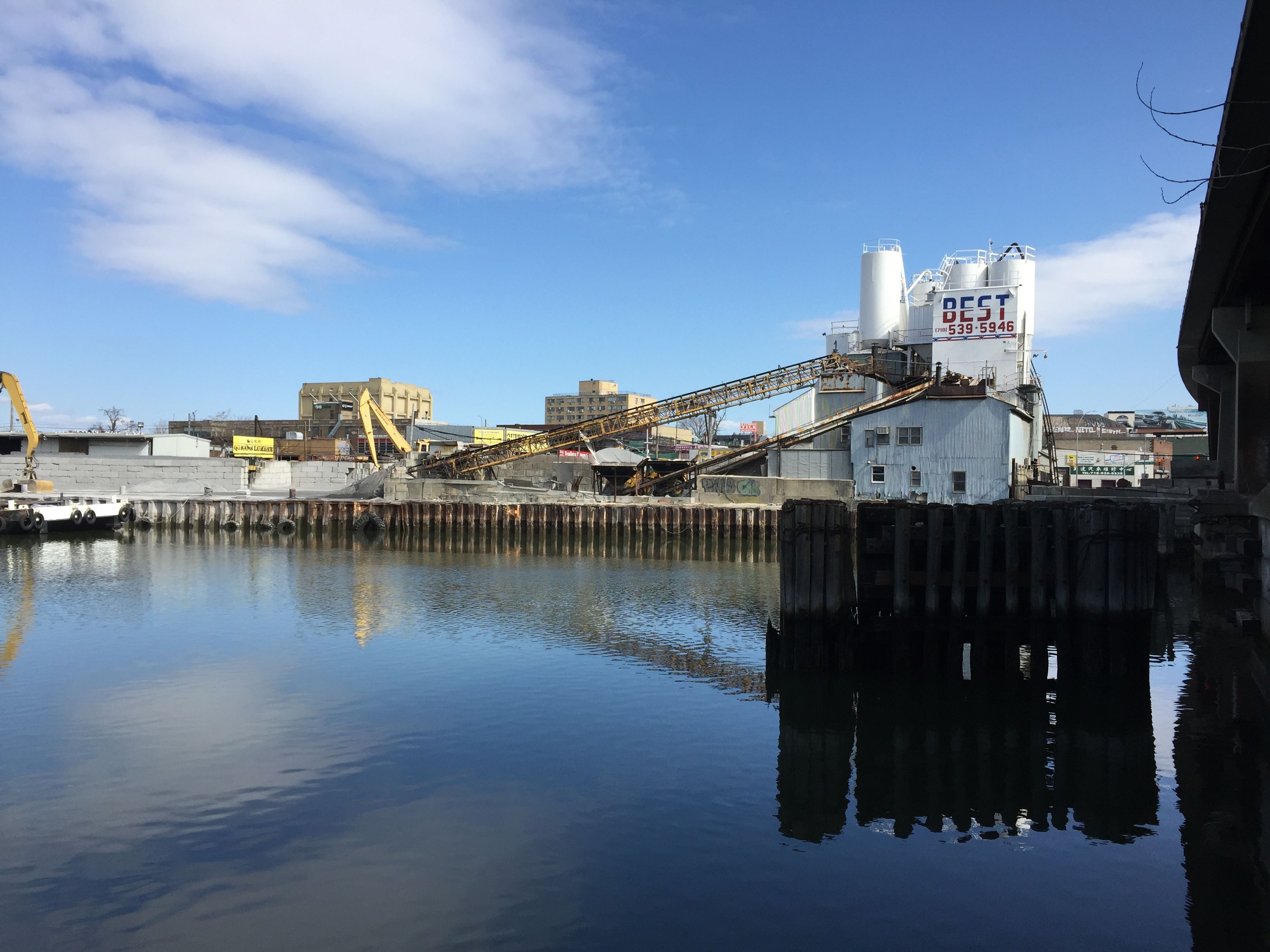
The tidal part of Flushing Creek (Photo: Sarah Laskow)
He stops the car under a bridge and gets out. Here, Flushing Creek re-emerges for the last time, wide now. On the other side of the water are concrete plants, and though they’re still now, they still run on weekdays. This scene could soon disappear, replaced with new development. Gentrification can be good for hidden waterways, as money calls attention to pollution and demands restoration of long-neglected streams, but it has a tendency to erase the past, too.
Kadinsky walks to the edge of the water, and says, “For me, this is the real Flushing Creek.” The creek flows out into Flushing Bay, and into the East River, mingling with the rest of New York’s waters.










Follow us on Twitter to get the latest on the world's hidden wonders.
Like us on Facebook to get the latest on the world's hidden wonders.
Follow us on Twitter Like us on Facebook